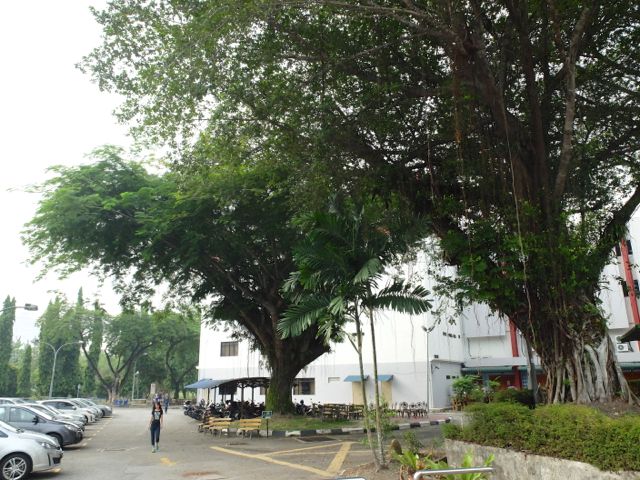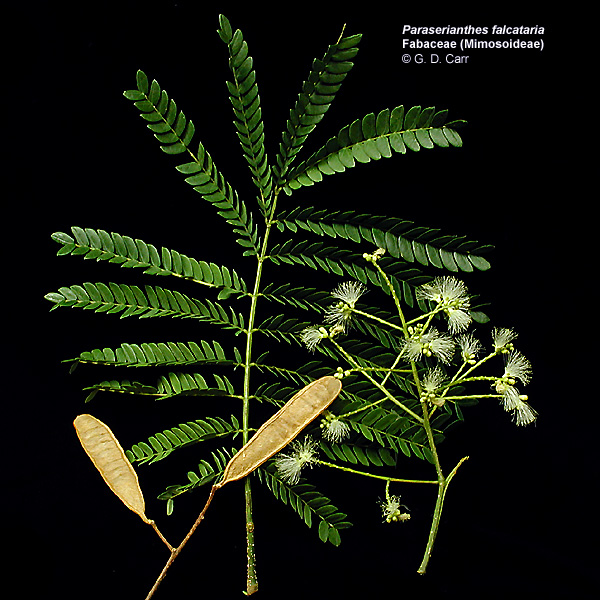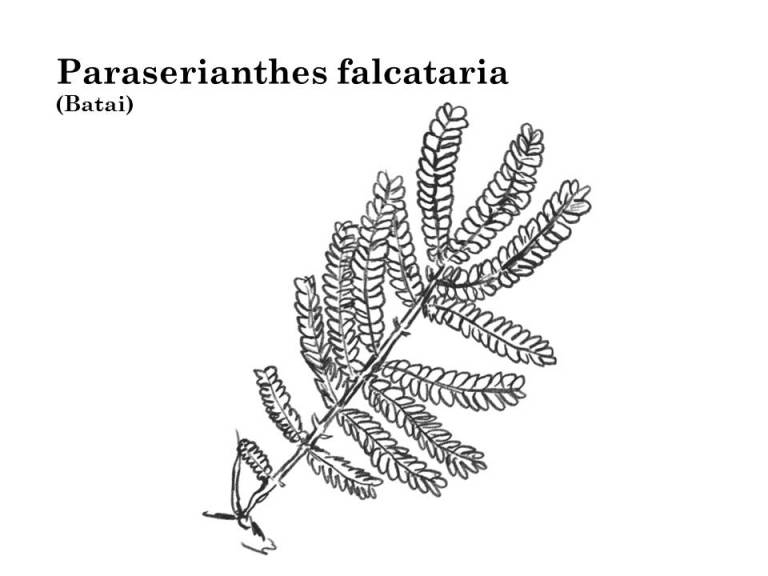About This Tree
LEGUMINOSAE (Legume, Pea & Bean family)

Batai is a fairly large tree that can reach height of around 40 metres. In open areas, it will grow into a big, umbrella-shaped canopy. It has white to light grey trunk with smooth, slightly warty bark. Its leaves are divided twice into small, oblong leaflets. “Falcate” means “curved like a sickle,” referring to its leaflets. The topside of the leaf is a dull-green colour and hairless, and the underside is paler with fine hair. The flowers are cream to yellow in colour and grow in clusters (raceme) sometimes arranged in panicles (see photo below). Like all legumes, this species produces straight and flat pods (fruits), which is dull to dark brown in colour.
In natural stands in Irian Jaya, P. falcataria is associated with species such as Agathis labillardieri, Celtis spp., Diospyros spp., Pterocarpus indicus, Terminalia spp. and Toona sureni.

Common Uses
The bark of this species has tanning agent, which can be used in dyeing leathers. The leaves are used to feed chicken and goats. The trunk produce soft timber and pulpwood suitable for general utility and paper making. The tree also provides several services to mankind. Notable ones are like erosion control in slopes, nurse crop for cocoa, tea and coffee plantation, nitrogen fixing, and improving soil condition. This tree is also planted as ornamentals.

©Sarah Aqila
Interesting Facts!
- In 1988 and 1989, gall rust disease caused by Uromycladium tepprianum provoked severe damage in Bukidnon Province (Mindanao, the Philippines). The government banned the transport of logs in and out of Bukidnon Province, and planting was suspended.
- Plantation pests in Indonesia, Malaysia and the Philippines include stem borers such as the longicorn beetle Xystrocera festiva and the red borer Zeuzera coffea (a cossid moth). Leaf-eating caterpillars (e.g. Eurema blanda, E. hecabe and Semiothesa emersaria) may attack seedlings and trees.
References:
Click to access Paraserianthes_falcataria.PDF
Click to access BKrisnawati1103.pdf
Click to access BKrisnawati1103.pdf
Want to know more? (More content coming soon!)